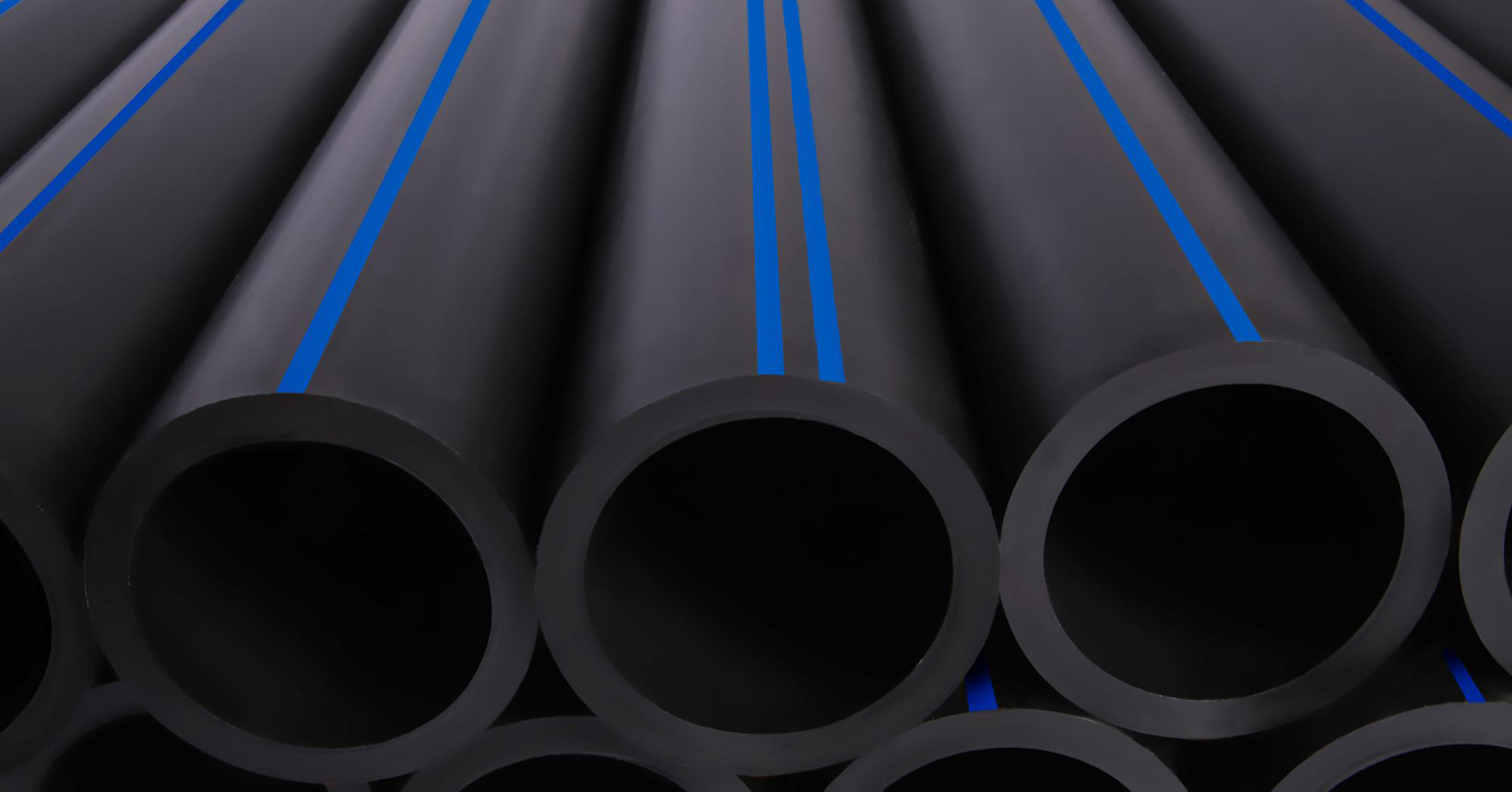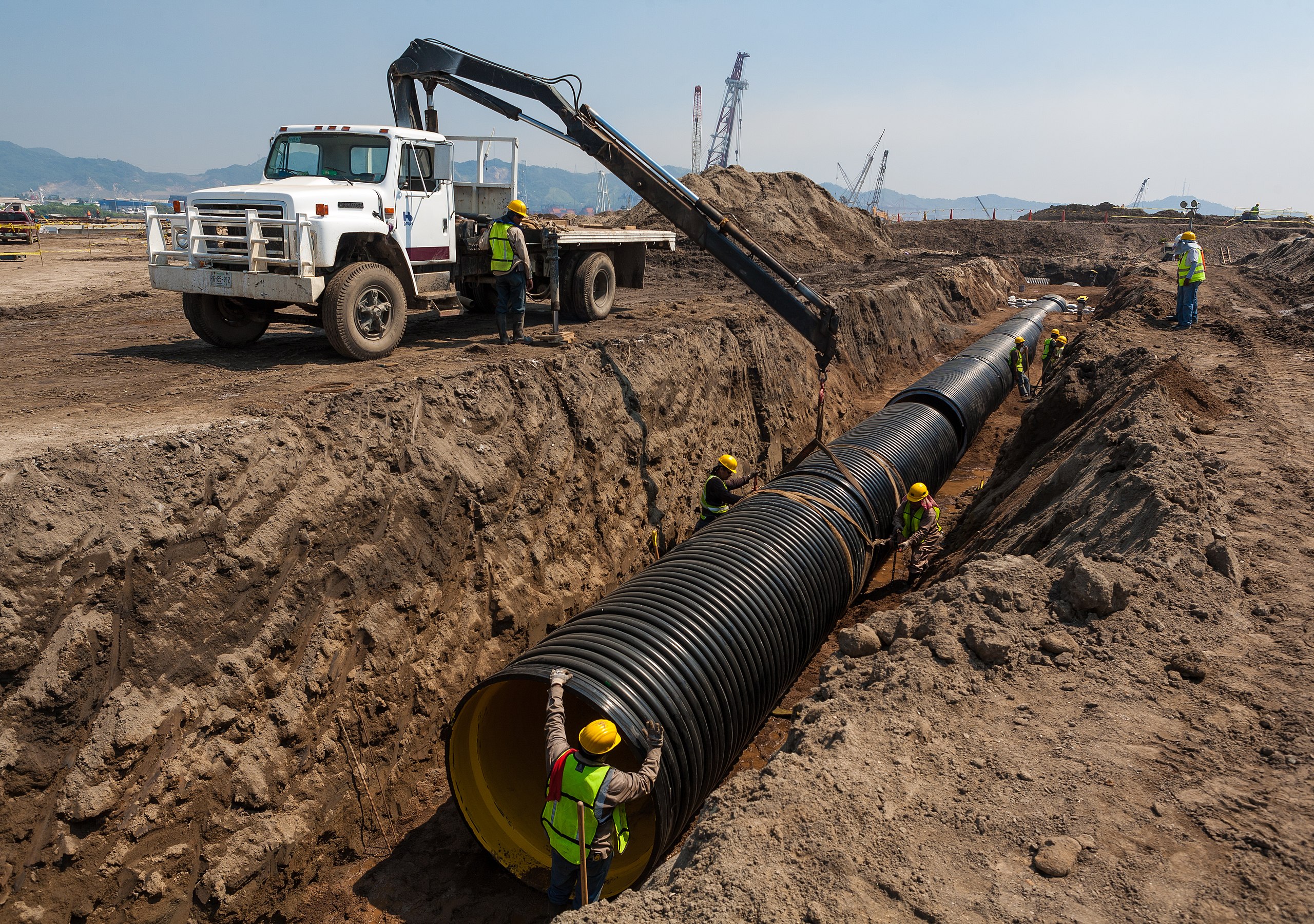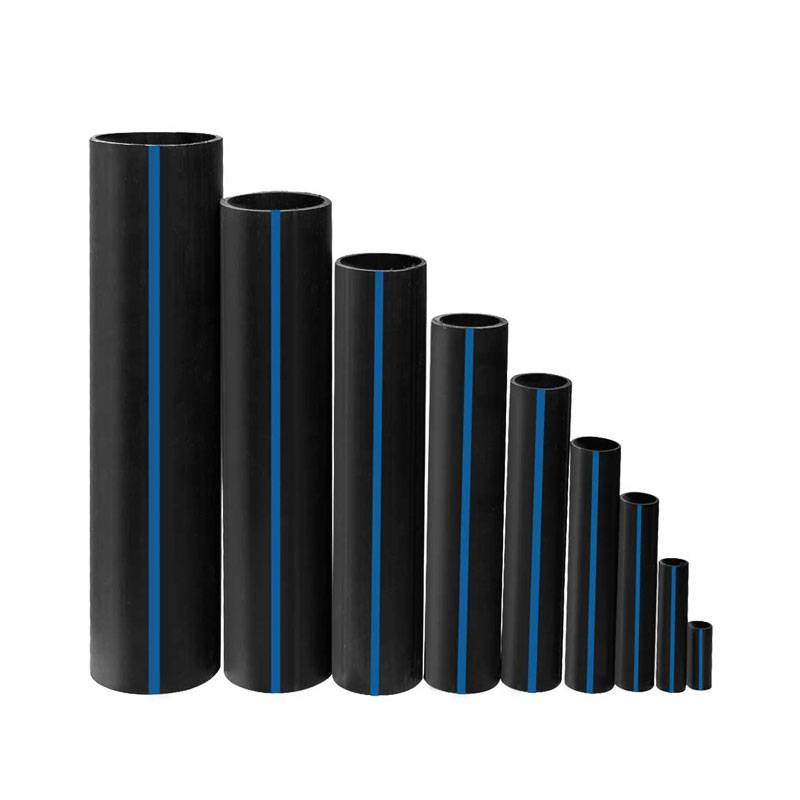custom hdpe pipe manufacturing Midland TX: Innovations Shaping the Market
Explore the Production Process Behind High-Quality HDPE Pipeline and Its Applications
The production procedure of premium HDPE pipelines is elaborate and methodical. It begins with the choice of basic materials that enhance performance. Following this, ethylene undergoes polymerization to create resin, which is after that formed through extrusion. Quality assurance is paramount, ensuring that the end product meets stringent criteria. The trip of HDPE pipes doesn't end with production. Their applications throughout different sectors disclose a more comprehensive significance worth examining.
Understanding HDPE: Features and Advantages

High-density polyethylene (HDPE) is a versatile polycarbonate known for its resilience and resistance to various ecological aspects. This product exhibits superb tensile stamina, making it suitable for requiring applications. Its low-density framework adds to a lightweight product, assisting in ease of managing and installation. HDPE also showcases exceptional resistance to chemicals, which reduces destruction when revealed to severe compounds.
The material's low moisture absorption even more enhances its longevity, making it ideal for usage in pipes and tank. Additionally, HDPE is resistant to ultraviolet (UV) radiation, making sure that items keep their stability also when subjected to sunlight. Its adaptability enables for the development of intricate shapes without compromising toughness. The green nature of HDPE, typically originated from recycled products, adds to its charm, promoting sustainable techniques in production. On the whole, these homes and benefits make HDPE a favored choice for various industrial and consumer applications.
Basic Material Option for HDPE Manufacturing
The option of resources for HDPE production is essential to validate the final item fulfills the wanted requirements and high quality standards. High-density polyethylene (HDPE) is primarily created from polymerized ethylene, originated from nonrenewable fuel sources such as all-natural gas or unrefined oil. The top quality of these feedstocks significantly influences the mechanical and thermal buildings of the last HDPE.
Additives also play a considerable function in enhancing HDPE's efficiency, including anti-oxidants, UV stabilizers, and colorants, which enhance resilience and resistance to environmental elements. The choice procedure must take into consideration not only the chemical structure of the raw materials yet also their processing characteristics to ensure efficient production.
The sourcing of raw products must focus on sustainability and conformity with ecological policies, as accountable techniques are essential in today's market. Inevitably, careful raw product selection lays the structure for generating premium HDPE pipelines suitable for diverse applications.
The Extrusion Refine: Shaping HDPE Pipeline
The extrusion procedure plays a crucial role in forming HDPE pipes, starting with meticulous material prep work methods that assure excellent circulation and uniformity. Equally important is the design of the die, which straight influences the final dimensions and surface high quality of the pipeline. With each other, these variables contribute considerably to the performance and quality of HDPE pipe production.
Product Prep Work Strategies
Efficient manufacturing of HDPE pipelines starts with precise product prep work techniques, especially the extrusion procedure. Throughout this stage, high-density polyethylene material is initial dried to remove wetness, making certain perfect flow qualities. The resin is after that fed into the extruder, where it goes through home heating and melting, transforming right into a thick state. This home heating process is carefully regulated to preserve the material's integrity and efficiency. The molten HDPE is required through a die, shaping it right into a continual pipe kind. Proper temperature administration during extrusion is crucial, as it directly affects the product's homes and the end product top quality. When shaped, the HDPE pipeline is cooled down and cut to specified sizes, prepared for subsequent processing and applications.
Die Style Value
Precision in die design plays a vital function in the extrusion procedure of HDPE pipelines. The die acts as the last shaping device, straight influencing the pipeline's measurements, wall surface thickness, and surface area coating. A properly designed die guarantees consistent material flow, reducing defects such as irregularities and weak points. The geometry of the die should be enhanced to fit the particular residential properties of HDPE, including its thickness and thermal habits during extrusion. Additionally, the cooling rate of the product as it travels through the die can markedly impact the pipeline's structural integrity. Consequently, purchasing advanced die technology is vital for makers aiming to create premium HDPE pipelines that satisfy industry criteria and client assumptions.
Top Quality Control Procedures in HDPE Production
Although numerous aspects affect the quality of HDPE pipe production, reliable quality control steps are essential to assure consistency and dependability in the end product. Trick quality control methods consist of strenuous material assessment, verifying that the raw polyethylene meets well established requirements for purity and density. During the extrusion procedure, parameters such as temperature, stress, and cooling time are very closely kept an eye on to preserve dimensional precision and architectural honesty
In enhancement, post-production screening is crucial; producers typically conduct hydrostatic examinations to analyze the pipe's toughness and resistance to stress. Aesthetic assessments for surface defects additionally improve quality control. Certification from appropriate requirements companies, like ASTM or ISO, supplies an added layer of reputation. By implementing these extensive quality assurance measures, makers can lessen issues, enhance performance, and ensure that the HDPE pipelines fulfill the details needs of various applications, inevitably causing customer satisfaction and count on the product.
Applications of HDPE Pipeline Across Industries
HDPE pipelines are utilized throughout various fields as a result of their longevity and adaptability. In water distribution systems, they ensure effective delivery, while in wastewater management, they offer dependable services for waste transportation. Furthermore, farming irrigation networks take advantage of HDPE's resistance to corrosion and adaptability, making it an excellent option for contemporary farming techniques.

Water Distribution Systems
A substantial variety of markets rely upon high-density polyethylene (HDPE) pipes for efficient water distribution systems. Recognized for their durability and resistance to deterioration, HDPE pipelines are commonly utilized in municipal water supply networks, farming watering, and industrial applications. Their light-weight nature promotes simple handling and setup, reducing labor prices and time. Furthermore, HDPE pipes can accommodate numerous stress levels, making them suitable for both low and high-pressure systems. hdpe pipe in stock Midland TX. The adaptability of the product permits smooth combination into existing framework, minimizing the need for considerable excavation. HDPE's resistance to chemical seeping guarantees that the water provided continues to be risk-free and clean, making it an ideal option for keeping the high quality of safe and clean water across different markets.
Wastewater Monitoring Solutions
Effective water distribution systems also pave the method for ingenious wastewater monitoring remedies, where high-density polyethylene (HDPE) pipelines play a significant duty. Prominent for their resilience and resistance to corrosion, HDPE pipes are ideal for transporting wastewater in various setups. Their adaptability permits simple installation in intricate settings, decreasing the demand for considerable excavation. Additionally, HDPE's smooth indoor surface area reduces friction, improving flow rates and performance. These pipelines are also resistant to chemical leaching, making sure that contaminants do not compromise the surrounding atmosphere. Industries, districts, and treatment centers significantly rely on HDPE pipelines for their dependability and longevity, making them a recommended choice for modern wastewater administration systems. This versatility emphasizes the crucial value of HDPE pipes throughout countless applications.
Agricultural Irrigation Networks
Agricultural watering networks profit significantly from making use of high-density polyethylene (HDPE) pipes, which give reliable and trusted water shipment to plants. HDPE pipelines are light-weight, making them simple to carry and set up, while their versatility allows for different arrangements in diverse terrains. These pipelines show exceptional resistance to deterioration, chemicals, and UV radiation, making certain resilience in severe agricultural atmospheres. Furthermore, their smooth interior surface lessens rubbing loss, enhancing water flow and minimizing energy expenses associated with pumping. The long life of HDPE pipes, frequently going beyond 50 years, adds to reduce upkeep and replacement expenditures. Farmers increasingly rely on HDPE pipes to improve watering performance and advertise sustainable farming practices, ultimately leading to enhanced plant yields and resource conservation.

Future Fads in HDPE Pipe Innovation
As the need for sustainable and reliable framework grows, innovations in HDPE pipeline modern technology are positioned to change various industries. here Arising fads consist of the combination of wise modern technologies, such as sensors and IoT capacities, which assist in real-time tracking of pipeline problems, lowering maintenance prices and preventing leakages. Additionally, the growth of innovative manufacturing techniques, such as 3D printing, is allowing the manufacturing of facility, customized pipe styles that provide to specific job demands.
In addition, the concentrate on recycling and circular economic climate practices is driving the technology of HDPE pipes made from recycled materials, enhancing sustainability. Enhanced jointing techniques, such as electro-fusion and mechanical installations, are additionally enhancing installment effectiveness and integrity. Ultimately, the expanding emphasis on ecological policies is pushing manufacturers to take on greener manufacturing procedures, making certain that HDPE pipelines not just satisfy market criteria yet likewise foster a more sustainable future for framework growth.
Frequently Asked Inquiries
Just How Does HDPE Contrast to Other Plastic Materials?
HDPE exceeds lots of various other plastic materials concerning resilience, chemical resistance, and adaptability. Its reduced thickness and high tensile stamina make it optimal for various applications, usually surpassing choices in both performance and longevity.
What Are the Ecological Effects of HDPE Manufacturing?
The ecological influences of HDPE manufacturing include greenhouse gas emissions, power intake, and prospective contamination from manufacturing procedures. In addition, improper disposal can bring about soil and water contamination, increasing issues concerning long-term eco-friendly effects.
Can HDPE Water Lines Be Recycled?
Yes, HDPE pipes can be reused. Numerous centers approve utilized HDPE for handling, changing it into new products. This recycling adds to sustainability initiatives, decreasing plastic waste while saving resources and energy in the production cycle.
What Is the Life-span of HDPE Piping?

Just How Do Temperature Level Variants Influence HDPE Pipeline Performance?
Temperature variants greatly impact HDPE pipeline efficiency, impacting flexibility and toughness. High temperature levels can result in softening, while low temperatures might create brittleness, ultimately influencing the pipeline's resilience and viability for numerous applications in varied atmospheres.